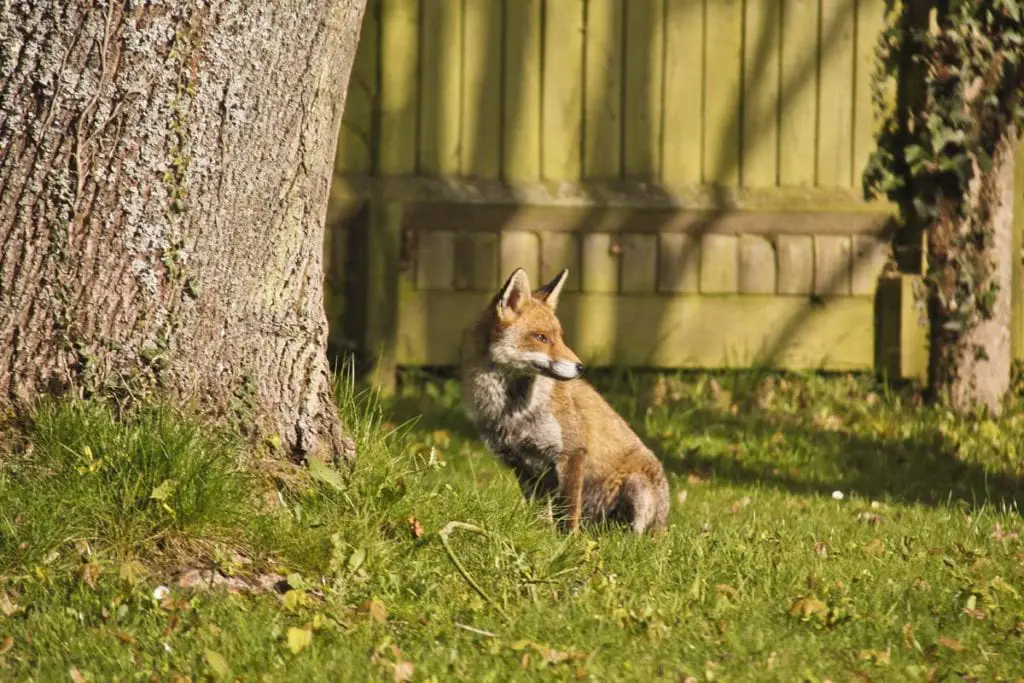The fox is an animal that has learned to adapt. Take away their forests, they will run through the streets. Keeping to their mysterious ways, hiding in abandoned buildings, slipping through fences into gardens for a quick bite, the urban fox has earned its keep.
Urban foxes live in cities where they have learned to adapt and survive. They take refuge in abandoned buildings and in small plots of land that still have a few trees and bushes. They live in any place where they can safely raise their young, feeding on rats and vegetation.
Urban Fox Facts Video
At night the streets come alive with movement from foxes. Foxes are nocturnal and urban foxes take advantage of the emptiness a late-night provides. They feed from gardens, garbage bins, and back porches where people leave out scraps for them.
Urbanization is a form of habitat alteration. Urban ecosystems allow foxes to live amongst us, having a small amount of vegetation and opportunities to kill rodents to keep them alive.

What Is an Urban Fox?
Urban foxes are a phenomenon that is a direct result of man’s developing the world into a concrete jungle. To survive this new world, foxes have become city scavengers.
They have always been opportunistic. Foxes in the wild live short lives, usually only 1-2 years. If they make it beyond that they go on to live a few more years. The reason it is so hard for them to survive in nature is because of the constant threat of predators and natural obstacles. You mostly see red foxes living in urban environments but you may also see gray foxes.
On top of that, human developments have threatened their natural habitats. You might be thinking, but why don’t they just move further out? That can be a complicated answer.
Foxes have a very small home range. They stay within 7 miles of where they are born. This becomes their territory, where they hunt and breed. While sometimes they can venture out further than their own reaches, they do this with the threat of invading another animal’s territory.
The urban fox as we know them today are survivors. However, part of their existence in the urban world is also due to them becoming dependent on humans. For food mostly. In the wild, a fox will only make a kill once or twice a week.

What Does an Urban Fox Eat?
Being the opportunistic animals that they are, what they eat varies greatly. Some foxes will eat from gardens. Some eat out of garbage dumpsters. They will hang around restaurants, waiting for them to throw out scraps.
Foxes will sometimes build their dens in empty lots that are adjacent to places that throw away food such as grocery stores and restaurants.
A fox eats rodents such as mice and rats and other small mammals. Some large cities like London and New York have huge rodent infestations, which become the new hunting grounds for urban foxes.
They can have a larger home range too, hunting on the outskirts, and returning to the urban cities for easy access to other types of food.
Some people feed urban foxes. Leaving them their food scraps, sometimes leaving out dog food and cat food for them. While this seems like a good way to help foxes, it can sometimes cause them to become dependent on humans.

Urban Foxes in London
One of the largest communities of urban foxes is in London, England. The streets of London are full of rodents, and opportunities for foxes to scavenge for food. The city is old and full of places for foxes to hide.
Some of the residents in London have even formed a comradery with urban foxes. They allow them to feed from their gardens. They leave scraps out for them. Often times when feeding a resident fox, the fox will return at the same time every single night for their food scraps.
Others see them as pests. Hunting foxes is a tradition in London (though not a very good one). There are programs in most large cities that allow foxes to be hunted and trapped.
Not everyone in London is so happy about their feeding from their gardens either. Foxes will sometimes trash plants and dig up the yard looking for worms and grubs. It’s easy to see why some people can be annoyed by their presence.
Regardless of how people in London feel about urban foxes, they are not going anywhere anytime soon. They have made quite a community there, where they are currently thriving.
Studies have been done in England where they have tried to collect data on urban fox populations.
In 2012 residents in Great Britain participated in a data collection program where they were asked to report sightings of urban red foxes. They used Google maps and geo-locating to track them in 144 cities.
Their study showed that the sightings were not that common in the more rural communities (probably due to the fact that they are primarily nocturnal animals). Resulting in two or fewer sightings per 1,000 people. Sighting density was much higher in larger cities such as London and Leeds. Source.
Urban Foxes Behavior
Wild foxes can be very skittish when it comes to interacting with humans. This has not stopped urban foxes from creating bonds with residents who decided to feed them. While they are very much wild animals, foxes who are fed by humans show behavior of dependency.
Urban foxes need places to breed and raise their young. In very large cities open land is reducing dramatically.
Urban development has spread from cities to neighboring towns and even into rural areas that once were comprised of mostly open land and are now filled with streets and sidewalks.

Urban Foxes Habitat
As we have discussed urbanization causes habitation alteration for wild animals. They must use what little land is available to build their dens. Fox dens are used primarily to breed and raise their young.
Urban foxes have learned that abandoned buildings and abandoned areas are their best chance to remain hidden, allowing them to continue their survival. They can also be found in heavily populated areas as well.

Many people find burrows and dens in their yards or side yards. It’s not uncommon for urban foxes to create multiple dens around a neighborhood and move from den to den. Moving their kits across yards, neighborhoods, and over fences to safety.
Most urban foxes prefer to have some amount of bushes or trees and are most likely to be found in yards that are wooded or that provide a little bit of privacy. Urban foxes have learned to hide in plain sight.

Are Urban Foxes Dangerous?
Since foxes are wild animals that hunt and exhibit wild behavior, a lot of people worry they can be dangerous. People will sometimes report foxes as being dangerous to their pets. While there are some cases where a fox might kill a house pet like a cat or a small dog, it is extremely rare.
Foxes in urban environments mostly hunt and feed on rodents. This is one reason large cities are a place where they thrive.
A fox that has an easy meal like rats and rodents, will not go through the trouble of fighting and killing a cat or dog.
Mysteriously enough, they seem to get along in most cases. Foxes are very much like cats and are directly related to dogs. This doesn’t mean that they will not attack or even eat another canid.
Pets that are allowed free range are more likely to get killed by automobiles than they are by wild animals.

How to Keep Foxes Out
For those who wish to keep foxes out of their gardens, and from having their babies (kits) under their houses, there a few tips we have put together.
- Do not feed foxes
- Close off crawl spaces
- Put up fencing around your yard
- Protect your livestock
These are just a few precautions to keep foxes off your property. You should not feed foxes if you do not want them returning for their meals. It’s also a good idea to keep bird feeders clean from spilling onto the ground. Many of the small mammals that fox’s prey on, such as squirrels are attracted to seeds and bird feed.
You should also keep your house secure, close up open areas, crawl spaces and the skirting around your home. Use chicken wire and meshes to keep them out. Foxes can cause damage to your property if allowed to continue getting inside insecure areas.
Always protect your livestock with adequate fencing. The same goes for your garden, putting up a fence is the best way to prevent foxes from creeping into your garden. Just keep in mind foxes are known as being clever for a reason!
Check out our PAWSOME new collection of Fox Gifts
See more about fox habitats.
Frequently Asked Questions
Some people find foxes to be irresistible! They are cute animals. However, if you encounter an urban fox know that it is a wild animal, it’s not tamed or domesticated. Getting close to them is at your own risk
Since urban foxes are rarely seen during the day due to them being nocturnal people often ask, where do they go? They hide. Urban foxes are great at keeping out of sight, mostly sleeping during the day in wooded areas or abandoned buildings.
Foxes do not usually kill cats for food. One of the attractions of an urban environment is the amount of human supplied food sources and rodents that live in the city. It would be rare for a fox to hurt a cat or a dog.
If you just cannot resist feeding an urban fox, keep in mind that certain types of pet food can be bad for them. Cat food is usually too fattening for them; however, dog kibble can be ok. You can also feed them food scraps if you avoid things like chocolate, avocados, and fruits that have pits.

